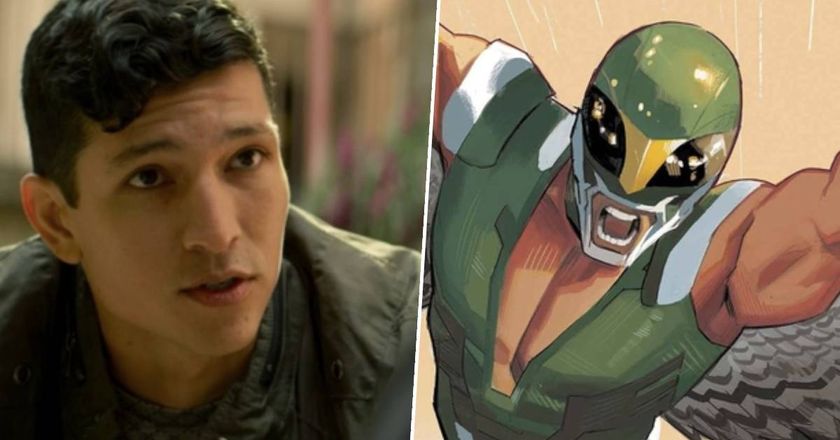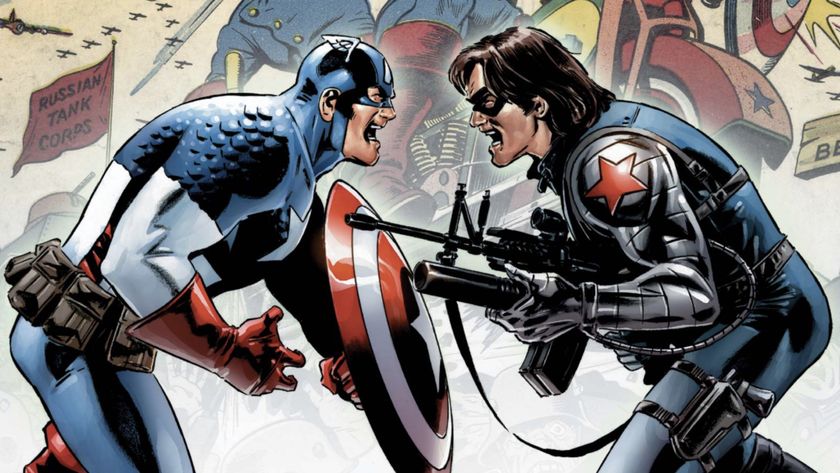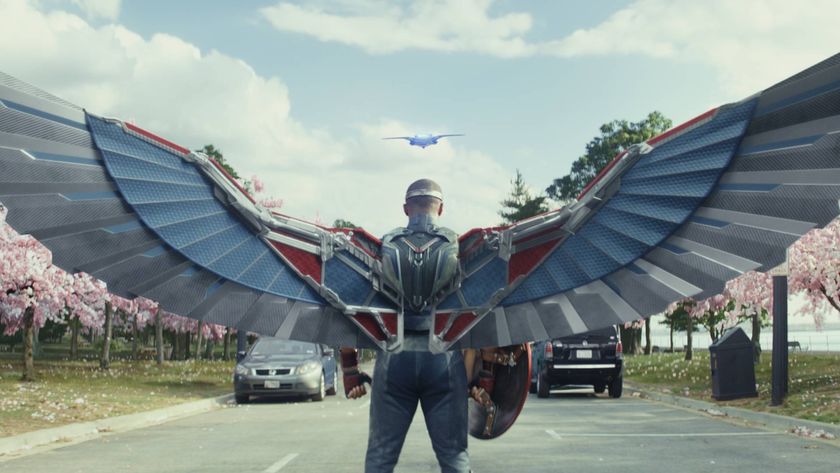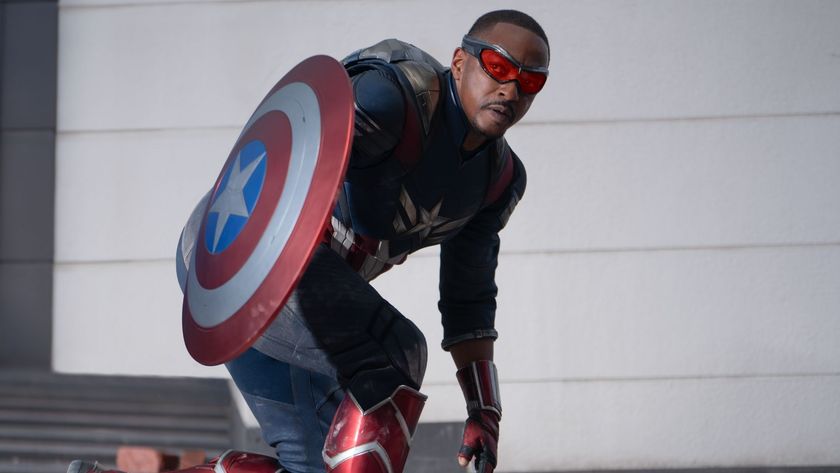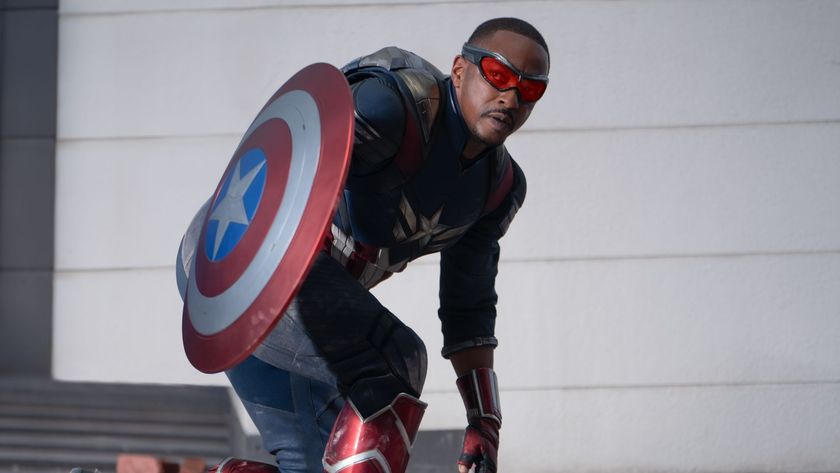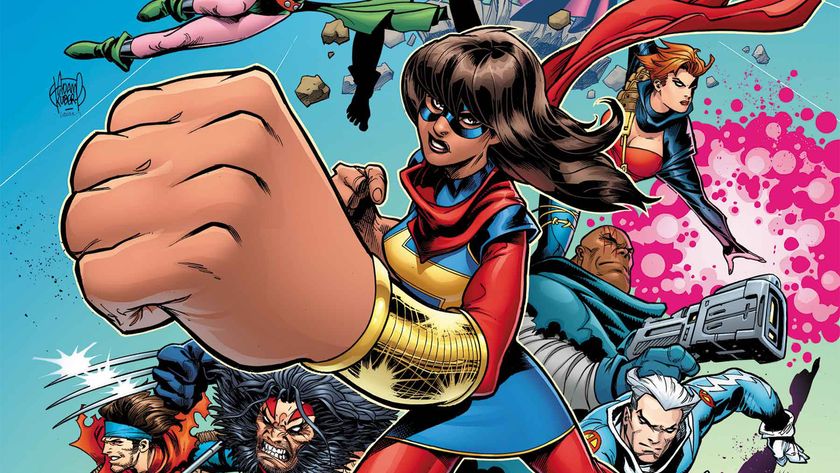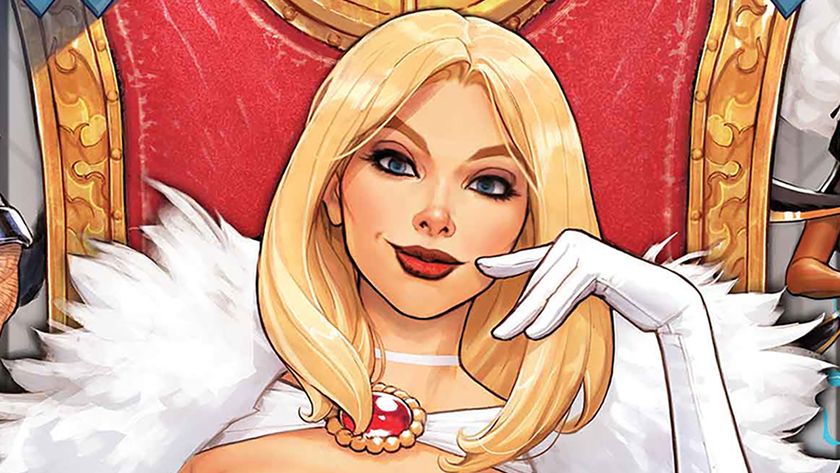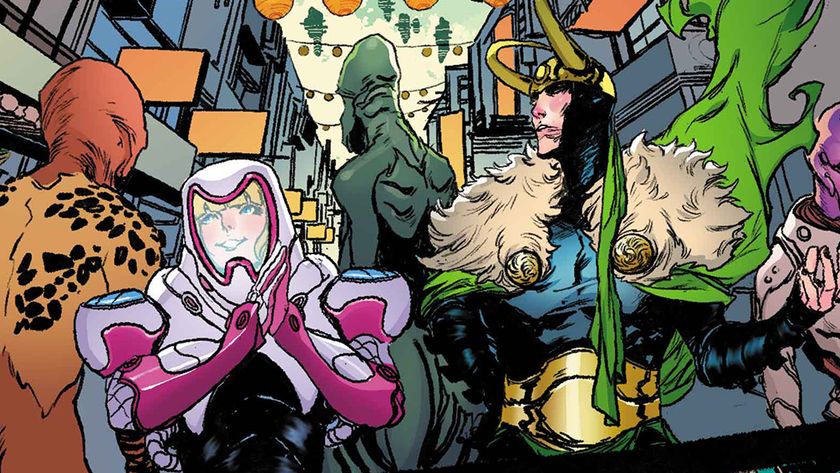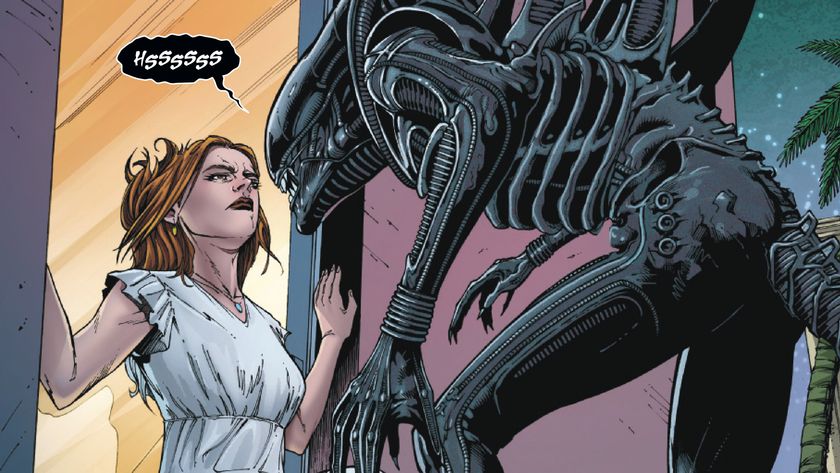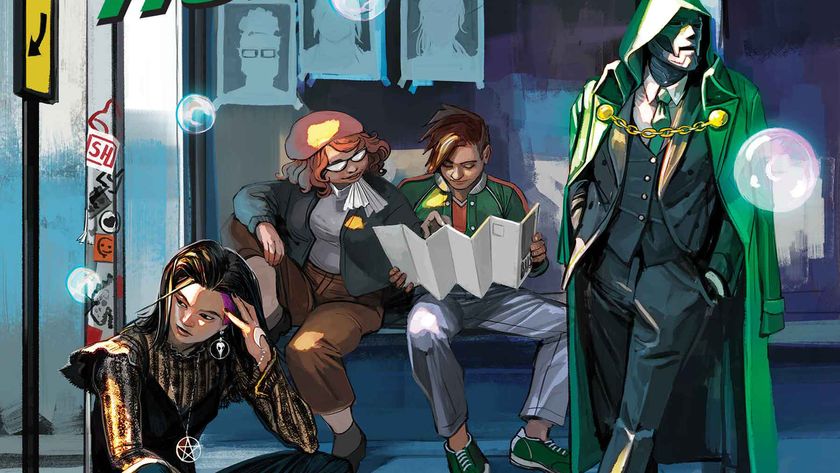How a classic '70s story set Sam Wilson on the path to becoming Captain America ... again
Writer Steve Englehart flashes back to the ‘70s, when his work set the stage for Sam Wilson to eventually become Captain America
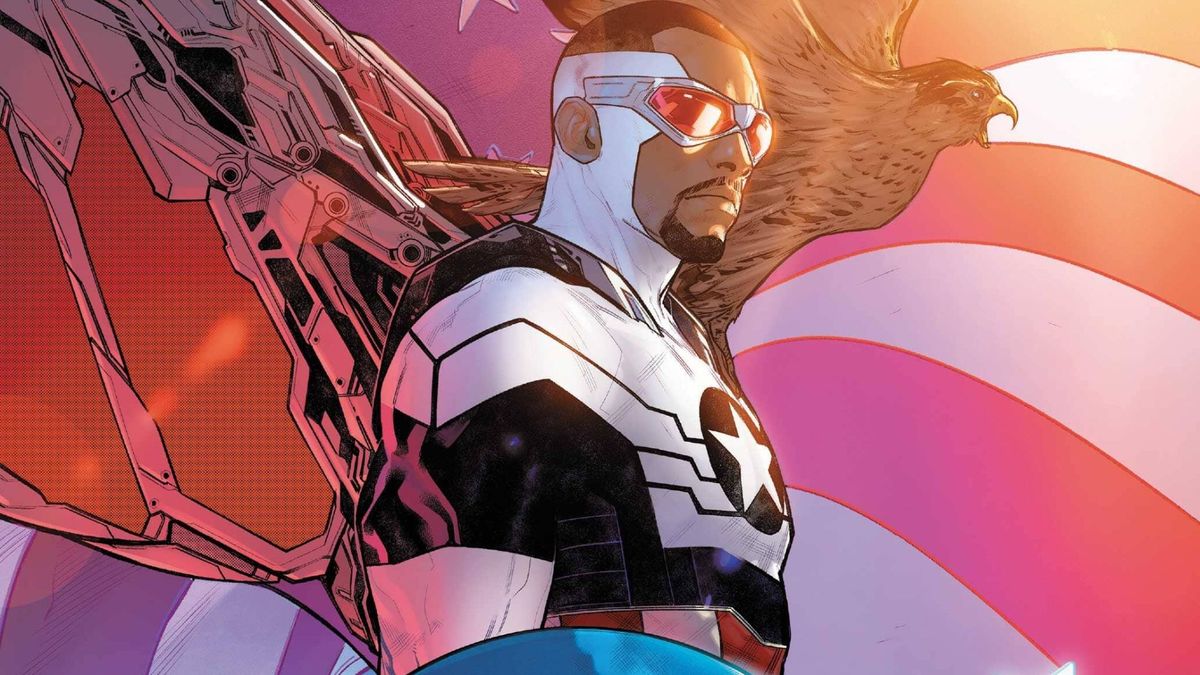
Sam Wilson is Captain America ... again.
After reclaiming the mantle in 2021's The United States of Captain America limited series, Marvel Comics recently announced that beginning in April, Sam Wilson AKA The Falcon would once become the star of a Captain America title for a second time. This time around, however, Sam and the original Cap Steve Rogers will continue to share the superhero moniker and star in individual monthly series both titled 'Captain America.'
Steve Rogers will star in Captain America: Sentinel of Liberty and Sam Wilson will star in Captain America: Symbol of Truth.
And in case you're wondering, Steve Rogers will keep the iconic original Captain America shield while Sam Wilson will apparently get a new shield of his own.
Wilson's recent return to the Captain America identity reflects the current status of the MCU version of the character, who as the conclusion of the 2021 Disney Plus streaming series The Falcon and the Winter Soldier put aside any doubts he had about claiming the title and became the new Cap.
And Sam-as-Cap will reportedly anchor a fourth feature film installment of the MCU Captain America franchise starring Anthony Mackie.
The Falcon's journey to the role of Captain America isn't a new invention for the MCU or Marvel Comics. It served in the role a few years back when Steve Rogers temporarily lost the anti-aging side effects of his Super Soldier serum and became an elderly man.
Comic deals, prizes and latest news
Get the best comic news, insights, opinions, analysis and more!
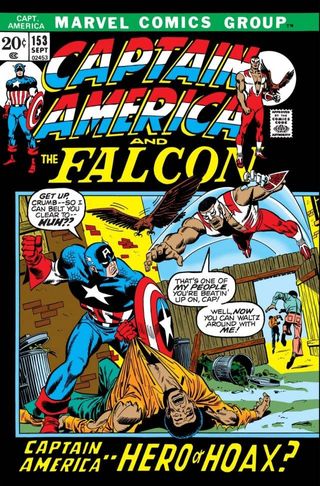
But that modern story didn't come out of a vacuum either. All the way back in the '70s, writer Steve Englehart took over as writer of the main Captain America title (renamed for a period as Captain America and the Falcon), elevating Sam Wilson from Captain America's sidekick (created by Stan Lee and Gene Colan in 1969's Captain America #117) to his full-on partner, and putting in place the building blocks that would elevate Sam to Captain America himself decades later.
"I talked at great length about how I got to my version of Captain America, but the Falcon, he's just a good guy," Englehart told Newsarama in 2017. "As written to that point, he was just a good, solid character. I didn't feel the need to come up with a whole different approach to him."
Englehart's approach was informed by considering what had already been established for Sam Wilson, but asking himself where the character could grow from there.
"I just thought, Falcon had a girlfriend, a neighborhood, a gang boss, and criminals he was going up against – he had a world, but it had only been touched on because Captain America was the guy driving the book," Englehart stated. "On the other hand, the cover said 'Captain America and the Falcon,' and it was the '70s – which was an idealistic time - and I was a young idealistic '70s guy.
"So I thought 'Why does the Black guy have to be the secondary character here?' I knew Captain America was the draw, but I also knew I could certainly do more with the Falcon than had been done."
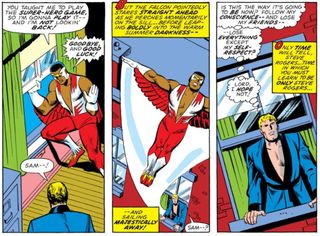
One of Englehart's biggest innovations for Steve Rogers was taking him out of the mantle of Captain America after he became disillusioned by the actions of the United States government, putting him in a new, non-patriotic costume as Nomad – another development that eventually set the stage for Sam Wilson taking the mantle of Captain America many years later.
"When we got to the Nomad story, I thought 'Well, if there's no Captain America, at least there's still a Falcon,' the writer explained. "So by making him a stronger character up to that point, I then had the tools to shift focus to Falcon while Nomad was doing his thing. And even though there was no Captain America, there was still plenty of superheroics going on."
Interestingly though, when asked whether he foresaw his story leading to Sam Wilson becoming Captain America himself, Englehart says "No, not at all."
"I think he was well-trained by Steve to take that responsibility, but to me I wanted him to be a solid partner – a junior partner, in a sense, because Captain America takes the senior partner role – but as close to 50/50, 60/40 that I could get to," Engelhart elaborated. "But I never foresaw him as anything but the Falcon."
In his tenure as writer of Captain America and the Falcon, Englehart redefined and revamped many aspects of the Falcon, from giving him wings ("That was me thinking a guy named after a bird should be able to fly," he quipped) to upgrading his profile as a hero alongside Steve Rogers.
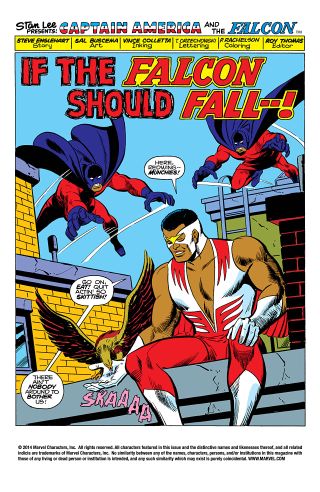
But by far the biggest change Englehart made to Falcon, and the one that would do the most to inform the character's arc for the next few decades, was to fully redefine his backstory (which differs greatly in comic books from his MCU history as a special forces soldier).
Originally, Sam Wilson was a social worker with an affinity for birds who became an ally of Captain America when he helped take down the Red Skull. Englehart went all the way back to that original story, retconning in the idea that Sam Wilson was actually 'Snap' Wilson, a hardened criminal whose mind was rewritten by the Red Skull using a Cosmic Cube as a plot to trick Captain America into taking on a new ally who would eventually betray him.
"When I first came onto Captain America, I wasn't thinking of him as anything but 'the Falcon.' I upgraded his powers and gave him wings, and built up his world, but that was all done prior to that decision," Englehart explains. "When it came time to end my run and to hand the book off – it's not always honored but it's common courtesy that if you know you're gonna pass the book off to someone else, you give them a good start and try to set up some ways for the story to go."
"So I thought, 'We just did all this stuff with Cap, so the hook has to be the Falcon.' And then I started thinking about what hadn't been done with the character yet, and I realized that the biggest thing I could do would be to completely change him and reveal he's not the guy we thought he was."
At the end of Captain America #186, the issue which retconned Falcon's history, Sam Wilson rejects his newly revealed past and chooses not only to refuse to betray Captain America but remains on as his partner, helping defeat Red Skull again.
As he didn't plan to be the writer to continue the story, Englehart co-wrote the story of the reveal of Falcon's secret identity with incoming writer Jack Warner, with the intent that Warner would resolve the story in his upcoming run.
However, Warner's run was cut short (partially by the return of writer/artist and Captain America co-creator Jack Kirby to the title) and the storyline was essentially ignored in subsequent issues.
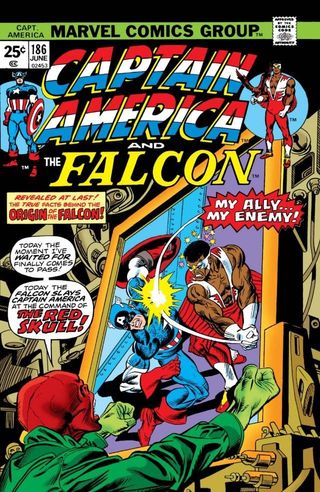
Later writers would add new elements to Falcon's backstory, often revisiting the question of whether his mind was truly overwritten by the Red Skull or not.
Decades later, during the time Sam Wilson had assumed the mantle of Captain America, writer Rick Remender (the writer who brought Sam Wilson into the role of Cap) established in All-New Captain America #3 that Red Skull had indeed brainwashed Sam Wilson.
However the false memories were not of his life as Sam Wilson, son of a preacher and social worker (more or less his actual history), but those of 'Snap' Wilson, which Red Skull had created as a way to discredit a prominent Black superhero (cause, ya know, Red Skull's a huge racist).
Remender's successor Nick Spencer eventually took the conceit of Red Skull mindwiping heroes with a Cosmic Cube even farther, using a Cosmic Cube to re-empower Steve Rogers while also creating a false history where Steve was not an American hero, but a Hydra spy who volunteered for the Super-Soldier experiment as part of a Hydra plot to conquer America, which eventually came to fruition before Sam Wilson and the 'real' Steve defeated the Hydra doppelganger.
(That story, 'Secret Empire,' takes its title directly from Englehart's most famous Captain America arc, drawing a direct link between the concepts at hand).
However, Englehart himself didn't have an answer for the 'true' identity of the Falcon in mind when he began the story, preferring to leave that in the hands of subsequent writers.
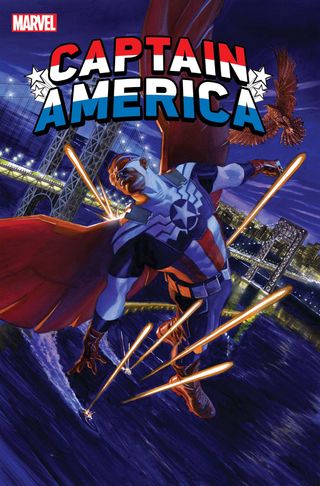
"Now people ask me, 'Well is he really Sam Wilson? Or 'Snap' Wilson?' And the answer is, I have no idea," he explains. "If I had written the rest of that story, I would have found out. The characters would have told me as I was writing. But because I didn't write that story, and because all I was doing was setting it up, I just said to Warner 'This is an interesting thing, and now you can go play with it.'"
In the end, despite the dropped plotline and the rapid shifts in the title's status quo which led the story to be dormant for some time, Englehart's developments for the Falcon wound up putting the last piece of the puzzle in place for Sam Wilson to eventually become Captain America – both in the Marvel Cinematic Universe and on the comic book page, now for the second time.
Will The Falcon & The Winter Soldier show Sam Wilson following the path laid out by comic books, or will someone else ultimately wield the shield as Captain America? Here are 10 characters who have wielded the Captain America shield in comics - Sam included.
I've been Newsarama's resident Marvel Comics expert and general comic book historian since 2011. I've also been the on-site reporter at most major comic conventions such as Comic-Con International: San Diego, New York Comic Con, and C2E2. Outside of comic journalism, I am the artist of many weird pictures, and the guitarist of many heavy riffs. (They/Them)
